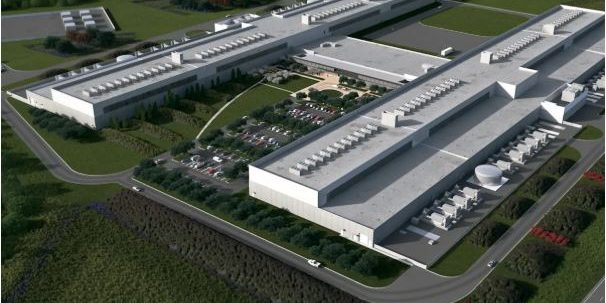By Tian Su at Texas A&M University
The Boom
Between 2023 and 2024, Central Texas, particularly around Austin and San Antonio, witnessed a four-fold increase in data center construction, totaling 463.5 megawatts (MW) of potential demand under development. This surge positioned the region as the second-largest data center market in the U.S., trailing only Northern Virginia ().
Notable developments included $500 million, 180,000-square-foot data center and a 13,000-square-foot flex office space at 2351 Innovation Blvd, located at the intersection of SH 130 and West US 79 in Williamson County, and in Cedar Creek. These projects not only spurred local economic growth but also significantly influenced land markets. The demand for tracts of land suitable for data center development led to increased land sales, particularly in areas with access to reliable power and fiber infrastructure.
Why Texas?
The state’s vast land availability, business-friendly regulations, and relatively affordable power (compared to coastal states) make it an attractive location for major tech firms and hyperscale operators. Beyond these practical benefits, Texas has several other key advantages that are fueling this growth:
- Central time zone: Texas’s central time zone offers an edge for global operations. For the most part, the state is also inland, meaning there are fewer risks from hurricanes, earthquakes, or coastal flooding. That geographic safety makes for more stable uptime guarantees, which are promises providers in data centers make to keep their systems stay online and operational almost all of the time.
- Proximity to key infrastructure: Texas is a prime location for data centers due to its robust infrastructure, including a vast network of highways, fiber optic cables, and access to critical power grids.
- Abundant renewable energy: Texas leads the U.S. in wind power and is rapidly scaling solar, which makes it a prime location for energy-hungry data centers looking to meet sustainability goals (). For sustainability-conscious companies like Microsoft, Meta, and Google, this makes Texas a prime destination to hit decarbonization targets.
- Lower Operating Costs: Compared to coastal tech hubs such as Silicon Valley or New York, Texas offers lower overall costs of doing business.
While property taxes in Texas are generally higher than in many other states, some communities offer property and sales tax abatements to attract businesses. Additionally, Texas generally has fewer regulatory hurdles, making it easier and more cost-effective for companies to operate and expand.
Power and Land Demands and Challenges
The Electric Reliability Council of Texas (ERCOT) that peak electricity demand for Texas could reach 218 gigawatts (GW) by 2031, more than double the 2023 record of 85.5 GW. Data centers are expected to account for the largest percentage of this growth, driven by the energy requirements of artificial intelligence (AI) and cloud computing services.
Meeting this demand will require a major expansion of Texas’ power generation capacity, whether through new renewable energy installations or additional natural-gas-fired plants. Either path carries substantial implications for land use, from sprawling solar farms and wind arrays to traditional power plants and supporting infrastructure.
The demand for land suitable for data center development not only means more sales but also transformed land-use patterns. For example, in the Permian Basin, traditionally known for oil and gas production, companies like are repurposing land for data center sites. These developments are equipped with necessary infrastructure, including power, broadband, and water for cooling, and are strategically located to leverage existing energy resources.
Texas Land Market’s Future
The Trump administration’s policies have played a pivotal role in promoting data center growth in Texas. Announced in January 2025, the Stargate Project is an ambitious $500 billion initiative aimed at establishing a nationwide AI infrastructure. The project plans to construct up to 20 data centers across the United States, with Texas serving as a central hub. These would bring demand for large utility-ready parcels.
The AI revolution isn’t just happening online, it’s being built acre by acre right here in Texas. What began as a quiet tech migration has become a full-on infrastructure rush. In Texas, land is no longer just land—it’s also bandwidth, energy, and scalable infrastructure.
Views expressed on The 338 are those of the authors and do not imply endorsement by the Texas Real Estate Research Center, Division of Research, or Texas A&M University.
Article featured at https://trerc.tamu.edu/blog/ai-land-and-power-inside-texas-data-center-explosion/
Photo: Texas A&M University







